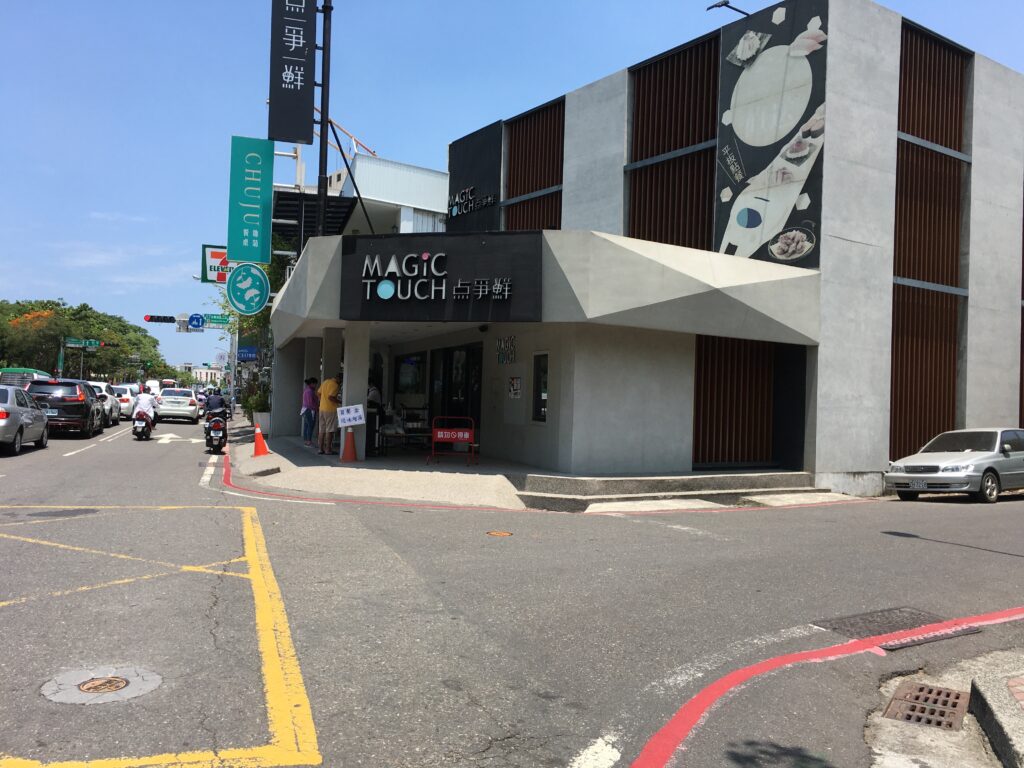
疫情關係,幾乎所有店家都不能內用了
点爭鮮(壽司)
外帶壽司餐盒,100元
外帶餐盒送味增湯/買三送一/買二送蛋糕
烤布丁,買一送一

疫情關係,幾乎所有店家都不能內用了
点爭鮮(壽司)
外帶壽司餐盒,100元
外帶餐盒送味增湯/買三送一/買二送蛋糕
烤布丁,買一送一
速食連鎖業者漢堡王8日在臉書粉專「BurgerKing 漢堡王火烤美味分享團」發文寫道,【薯…薯勾一的漢堡王薯條巧克力聖代,實在好玩】。
該粉專說,「鼠薯看起來,有像不能尬聖代嗎?風靡新加坡的熱潮席捲台灣,你準備好挑戰各種創新吃法了嗎?!」、「 I have a 鼠薯,I have a chocolate sundae,BANG!薯條巧克力聖代!香濃的香草冰淇淋,淋上了甜甜的巧克力醬,老少皆喜愛,但搭配金黃酥脆的薯條是否超乎你的想像?」
-768x1024.jpg)
漢堡王粉專小編說,「堡哥邀你玩出新花樣,將一冷一熱、一甜一鹹的衝突創造絕妙火花,發揮你的創意,無論你要沾著吃,或直接插在冰淇淋裡頭都可以,跳脫你的舒適圈,玩出你的極限!薯條巧克力聖代甜鹹融合的絕妙口感,甜而不膩,中和了味蕾。要跟上時下流行,一起玩起來」。「聖代跟薯條分開提供,讓大家自己挑戰各種吃法」,該小編也貼出販售期間為3/8-3/14(為了愛玩Instagram的妳,在婦女節這天熱鬧登場),嘗鮮好玩組合價為49元,全台漢堡王門市都可吃得到,但包括台積電、兒童樂園、樹林秀泰門市則不提供。
此外,即日起至3/31,至漢堡王官網預約外帶訂餐,全安格斯系列牛堡套餐輸入優惠序號「BKING15」,現折15元;3/16至3/23,漢堡王官方粉絲團「BurgerKing 漢堡王火烤美味分享團」祭出最快王者活動,天天送出華堡、小華堡免費吃堡序號,共計100組。最快留言者就有機會獲得,不限消費金額輸入序號即可免費獲得。
.jpg)
麥當勞的餐點消費組合搭配一直以來都有不少網友在討論,舉凡使用甜心卡、點點卡還是APP優惠券(coupons),都是網友愛用的省荷包好方法。最近有網友分享自己抽到「史上回饋率最高」的買1送1優惠券,折算算下來竟現省超過百元,羨煞許多網友。
該名網友在「PTT美食版分享」,自己一早打開麥當勞App時,意外獲得酪梨安格斯黑牛堡買1送1券,反觀同事大多都是小薯及歡樂貼,讓原PO興奮的表示「之前從來沒有收過這張」、「難道是麥當勞知道我超愛酪梨漢堡特地發給我的」並提到,去年這款推出時,至少吃了10顆漢堡,現在收到優惠券後,現PO上網詢問,引發許多討論。
.jpg)
不少網友提到「也太好了 沒抽過那麼高價的券」、「一顆144元,兩顆288元,你有賺到」,也有同是喜愛酪梨的網友表示「我有抽到優,我去年吃了7到8次」,更有不少網友好奇「怎樣可以收到酪梨堡買1送1啊?」、「抽到等於是拿到麥當勞兩倍券XD」,此外,更有網友推估「該不會是有統計吃幾次才給吧?」
我也抽中好幾次….但只換1次,因為不太愛吃速食食物
一名網友在臉書社團《我愛全聯好物老實說》分享近期到全聯領錢,提款機吐出一張「神秘白紙」,上方竟不是常見的優惠券(coupons),「印刷內容」曝光後讓一票婆媽瞬間暴動,直嚷「超想收集的!」
原PO表示,她到全聯福利中心消費順便領錢,領完錢後提款機吐出一張神秘的白色字條,上方非交易明細,也不是常見的優惠券內容,仔細一看發現竟是一個「幸運長長久九層塔烘蛋」食譜,紙條還印有美麗的花紋點綴。
-768x1024.jpg)
原PO解釋「全聯和國泰世華的合作,在全聯提款,會吐一張食譜給你」,食譜上方除了有食材和調味配料,底下還寫「九層塔補充滿滿葉黃素,讓眼睛晶亮,看見生活的小確幸」,原PO看完不禁直呼「好有趣!」
貼文曝光後,全場婆媽眼睛為之一亮,紛紛激動回應「會想收集!」「原來提款還有驚喜啊,都不知道」、「我那天買了白蘿蔔想煮排骨湯,順便領錢出來的食譜就是蘿蔔排骨湯」、「領到這張紙的瞬間想再提款一次」、「覺得很實用,不錯耶」、「我的是菠菜炒豬肝」。
.jpg)
一名女網友日前到好市多購買了一包冷凍花椰菜,但她每次微波以後,吃起來梗都潤潤的,因此求助網友「可以教我怎麼煮才像新鮮的嗎」,貼文一出,引起熱議。
該名女網友在臉書社團《Costco好市多 商品經驗老實說》發文,表示自己到好市多買了冷凍花椰菜,但只會使用「微波」的方式,吃起來「梗部都潤潤的」,「請問大家都怎麼料理這個花椰菜?有人可以告訴我怎麼烹調才是吃起來像新鮮的嗎」?
貼文一出,引起熱議,「永遠沒辦法像新鮮的,但大火不解凍快炒會好吃一點」、「不要退冰直接上,我覺得還不錯啊」、「不用退冰,直接用熱水泡10分鐘」、「這一款的口感其實算是不錯的+1」、「蠻好吃的啊,而且很方便,我都丟電鍋」。
另外,也有許多網友分享自己的「神絕技」,「冷凍青花菜的訣竅是,別煮它,讓它加熱就好,口感會保持脆脆的很好吃,回購超多次的,是家裡冷凍必備產品」、「滾水過一下就可以了,還會脆脆的,千萬不要煮太久…」、「一點蒜頭,花椰菜不用退冰,水洗一下,直接下去炒加一點水約2分鐘,完成,好吃,(無油料理)」、「川燙,而且快速,過水有熱就好,它是熟的」、「用氣炸鍋10分鐘,撒胡椒鹽」。
但也有網友認為,若想要吃新鮮花椰菜,還不如直接到市場或超市買,「預煮好的怎樣都不可能像新鮮的啊!我喜歡脆的花椰菜,完全不會想買冷凍的」、「它是冷凍的,每個人的接受程度不同啊」、「這應該沒辦法跟新鮮的比吧」、「直接去菜市場買新鮮的」。
個人經驗是,還是新鮮的最好吃,脆,冷凍的吃起來有點軟了,而且有我不喜歡的蔬菜味較重
唯一的優點是方便,快速….
為什麼Costco花椰菜沒有蟲?
一名女網友發文,表示自己到家樂福買了一個「不起眼」的麵包,豈料一吃下去驚為天人,貼文一出,也釣出不少內行網友大讚。
該名女網友在社群平台《Dcard》上以「家樂福這麵包好好吃……」為題發文,表示她日前無聊逛家樂福時,突然很想吃麵包,於是挑了一個「大又便宜,看起來很不起眼的韓國麵包」,「完全不抱期待的吃下去,所以也沒想過要拍食物遺照」。
.jpg)
而當原PO將「不起眼的麵包」一吃下肚,「結果好好吃,簡單好好吃的味道,有芝麻香氣,口感還有點QQ的,不知道合不合大家胃口,我是覺得這麼便宜,還好大一顆,味道口感還這麼不錯,好讚」!
貼文一出,掀起熱議,「出超~級多年了,一直都還蠻愛的」、「我也超愛,很Q又很香!一不小心就吃完了」、「無疑是各大賣場最好吃的麵包」、「每次看到都一定會買,便宜又好吃」、「有記憶以來就有這個了!超級無敵好吃」、「這個超讚的欸」、「這紅很久了,從小吃到大 」、「大賣場必買」;另外,還有人分享「不同吃法」,「這個麵包吃之前再拿去烤箱烤個幾分鐘,會香香脆脆的超好吃」。
一名女網友日前逛全聯時,發現一款洋芋片重新上架,讓她忍不住興奮直呼「好久不見」,貼文一出,掀起熱議。
該名女網友上月30日在臉書社團《我愛全聯-好物老實說》發文,表示自己逛全聯時,竟然偶然發現樂事一款「沾醬洋芋片」重新上架,也因為這款洋芋片已許久不曾在各大超市出現,讓她不禁興奮直呼「沾醬欸,重出江湖,好久不見呀」,另外,她在文末也不忘詢問網友們「沾醬洋芋片,還記得這味嗎」?
.jpg)
貼文一出,立刻引起熱議,「回憶呀回憶」、「這是許多7年級的回憶呀!」、「小時候的回憶啊!」、「7年級的回憶」、「上次看到馬上入手」、「口味不變,包裝不變,只是餅乾變少了」、「真的是小時候的回憶啊,沒想到還可以重出江湖,晚點立馬去全聯看有沒有」、「我要衝了」、「這個莎莎醬洋芋片好吃」、「這個我好愛啊」、「我昨天也去買了,哈哈!但小孩喜歡糖醋的」。
另外,也有內行網友分享該款餅乾的口感與獨特吃法,「糖醋超爆好吃,單吃或沾醬都讚」、「莎莎醬沾麥當勞薯條也很好吃」、「後面那個糖醋醬,好吃,像麥當勞沾雞塊糖醋醬」。
那個糖醋醬,比麥當勞的還好吃,我都拿來沾雞塊吃….

還沒到夏天,已經感受到夏天動不動35度以上的高溫了…慘,然後又可能遇到停電,更慘
天氣熱,當然就是冷氣給他吹下去,所以這時冷氣機就是家裏最吃電(耗電)的怪獸了
省電開始,就從如何看電錶開始嘍…
如果是住透天厝,電表是獨立的,
若是住大樓公寓,電錶可能就在屋外,也可能是在1F,或者是地下室停車場
再來,現在很多改成數位電表,就很好判讀
但像我家大樓還在使用傳統型指針電錶,就要學會如何看了…
好了…首先,先從你的電費單找到你家的電號
像我家的就剛好不是在那區那棟樓直接樓下可以找到,因為400多戶,所以一開始還不知道在哪裡,找了好久…
電號,就貼在電錶左上
電錶上有5個圈圈,由左至右看
通常只看後4個(千位),或後3個(百位)就夠了….家庭用電也就超不多2個月(每2個月抄電表)百度~千度左右
為了好判讀,所以每個圈順逆時針,像第1圈就是順時針跑,第2圈就是逆時針….
建議你可以從最右邊圈圈開始看,數字再跟電費單跟本期指數對照看看,就知道有沒有判別太離譜嘍…
像上圖的電錶數,08844
Try these tools, to get best results
1.Google analytics
2.Hitseps
3.Who.amung.us
4.Supercounters
Hitsteps網站分析
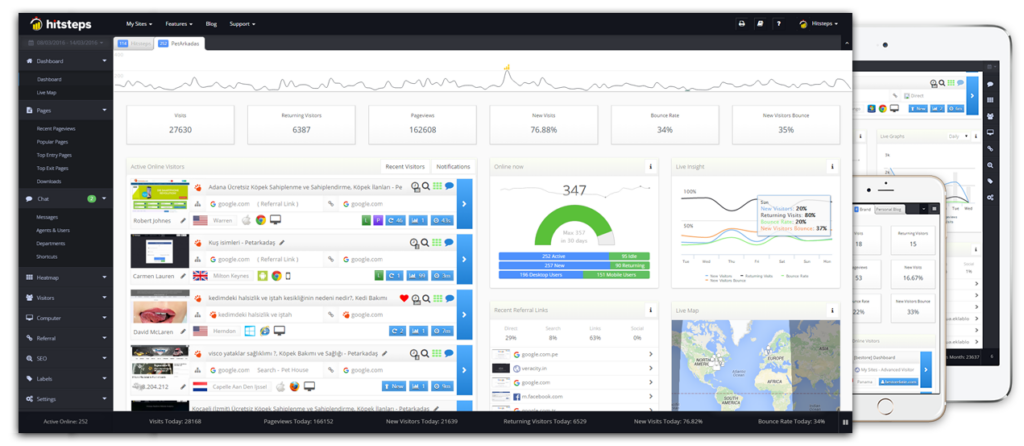
什麼是Hitsteps Web Analytics?
Hitsteps Analytics是功能強大的實時訪客管理和實時聊天工具。
它使您可以查看訪問者流,並關注每個訪問者以了解有關他們看到的每個頁面的更多信息。
它使您可以使用實時聊天工具與訪客互動。
您將獲得有關每個訪問者的詳細信息,例如地理位置,他們第一次訪問您的站點,對您站點的引用,他們的瀏覽器,操作系統和設備等等!
與Google Analytics(分析)相比,優勢包括但不限於每個訪問者的詳細信息,使用實時聊天工具與訪問者互動的能力,每個頁面的熱圖,精心生成和分類的報告,所有報告的實時分析等等。
原PO在臉書社團《Costco好市多商品消費心得分享區》提到,周六打算要帶家人一起去逛內湖好市多,不禁好奇詢問「有什麼CP值高的東西嗎?食品區」。
一名網友在臉書好奇提問,好市多食品區該怎麼買,CP值最高?貼文立刻引發熱議,釣出內行網友分享「神級SOP」,讓一票網友讚翻。
.jpg)
貼文一出,隨即引發網友熱烈討論,紛紛回應「帶錢就好了,看到喜歡就買」、「買自己需要的才是最高CP值!」「別去了,在家最省,沒有CP值最高的東西,只有你喜歡的東西最重要,大家的口味差異太大」、「別人的高CP不見得你也是高CP啊,我是建議,全部人員有一半有興趣就買了,一人分一點,就算雷也雷不多」、「最近被鹹豬肉驚艷到」、「鮮乳、衛生紙、特價品都是CP值高」。
個人覺得你有試吃到一輪,怎麼買都是CP值最高啦!!
對此,有內行網友分享,首先下載好市多的手機app,查詢本周特價品,再看看有沒有自己需要的東西,再下手。去到現場,看一下別人的推車裡搬了哪些東西,如果很多人都有搬上推車的,肯定CP值高,跟著搬就萬無一失。
一名男網友在臉書社團《Costco好市多 商品經驗老實說》發文,表示自己買了好市多衛生紙,可是每次打開都經常「開到爆開」,讓他不堪其擾,因此在文末詢問「有更好的小技巧能克服嗎」?
-797x1024.jpg)
貼文一出,引起熱議,「原來我不是孤單的」、「重點是完美開包後要如何只抽出第一張,有時急的時候總會抽出一把」、「買個盒子專門放衛生紙,您就可以殘暴的扒開他了」、「我幾乎都全爆」、「裝在面紙盒裡面,眼不見為淨」。
也有不少網友分享能「完美打開衛生紙」的小撇步,「我都是往下把空氣壓出來後,再開,基本上都成功,試試看」、「兩手大拇指或其他四指慢慢往外拉,也不要太大力,試試看吧」、「反手開,換成大拇指在底部,其他四指在開口處」、「右手握著右端,左手用點力往左端拍下去,”碰”一聲就開了。以前開的好痛苦,現在開的好爽快好療癒。不過不要教你們家小鬼開,那天回家發現通通被碰開了」。
另外,還有網友表示,開爆了也沒關係,只要用超商網袋裝起來就好,「開爆了用超商的網袋裝起來,哈哈,剛好掛在馬桶旁,很好拿取」,其他網友看了則表示,「我都沒想過這個」、「生活智慧王」。
-671x1024.jpg)
3+1+1模式5要素分類;
強弱強的輪轉邏輯;
強弱強四種過濾入場信號;
恆逸石化極限價位入場舉例;
富時100過濾線舉例;
EURUSD過濾線舉例;
老虎證券極限價位舉例;
正確止損复盤;
共振的兩種情況;
驗證與呼應。
美式賣場好市多(Costco)不定期推出優惠商品,吸引民眾搶購
通常這類跳樓價格商品大都是很特別的商品(都不是我喜歡的)
一名人妻表示,她逛好市多這麼久,第一次遇到「神秘時段」,讓她收穫滿滿。
原PO在《Costco好市多 商品經驗老實說》發文指出,自己逛好市多第一次遇到即期品大清倉「鷹嘴豆泥特價97元!本來要去拿隔壁的駱梨醬,但是看到這個價格,就手滑拿了一小箱,請問這個鷹嘴豆泥大家怎麼搭配吃呢?」

▲原PO逛好市多,第一次遇到即期品清倉活動。(圖/翻攝自 Costco好市多 商品經驗老實說)
貼文曝光,不少婆媽狂讚「没事多去逛逛,會撿到好康的,我就碰過,太嚇人的價位」、「這種即期品超低價以前就有了,只是近五年來賣太好了,根本沒有這個問題」、「什麼,有這個我怎麼不知道!」、「沒事多逛逛,會破產哈哈」。
有饕客分享吃法「薯片、玉米片、小黃瓜、芹菜、紅蘿蔔沾著吃或是做墨西哥捲餅的內餡」、「加點麵粉做蛋餅也可以」、「蠻好吃的,有微微的醋酸,生菜紅蘿蔔玉米片沾著吃很對味」、「墨西哥或是中東料理常用,最簡單就是蔬菜棒,可以完全替代沙拉醬」,也有網友提醒「便宜就代表保存期限快到了」、「這要趕快吃,因為很容易發霉」。
全台擁有千家以上門市的全聯福利中心,首度推出「善美的食物計畫」,搭配年中慶祭出超過300件商品第2件5折起、有機蔬菜全面88折起優惠,同時推出剩食無痕的理念,希望消費者吃多少買多少,不要過度囤貨。
全聯於2008年開始發展生鮮事業,花了13年時間經營有機與產銷生鮮蔬菜,目前耕作面積超過500甲、契作農民超過2,000位、年供應量超過1.2萬噸,販售的商品數量加起來更占了全部品項的一半,預計2021年契作面積可達約900甲、生產噸數超過1.6萬噸。

▲全聯,有機履歷,蔬菜,有機蔬菜。(圖/業者提供)
全聯今年首度宣布「善美的食物計畫」,透過「生態平衡」、「溫度守恆」、「營養均衡」、「剩食無痕」4大政策,自2008年發展生鮮事業以來,超市即設立「農場管理系統」,針對各契作農場進行管控。同時,也委任外部供應商設立「產銷履歷控管中心」,所有蔬果皆進行田間管理與農藥殘留檢驗等層層篩檢,再依照要求的規範檢查品質與蔬果外觀,測量尺寸以及秤重進行分級,按不同品項包裝,以冷鏈送達全台6座生鮮處理中心,後續再進行第二階段的3道關卡篩檢,分別為車溫測試、藥檢測試、品質測試,待確認商品無虞後再送至全台門市販售,期許做到「今日生產、今天到貨」的最佳「溫度守恆」環境。

▲有機認證與產銷履歷的業績占比超過30%。(圖/業者提供)
根據內部統計,全聯蔬菜類別占比,有機履歷的品項數已經佔了1/2、業績也貢獻了1/3,光是去年就獻出10億元業績、產銷履歷銷售金額也達14億,超市指出,2021年將於全門市導入有機認證專區,從去年600家拓展至上千家,讓有機的價格平民化;農家直採專區預計將導入200店,且如目前販售的慣行蔬果無法安全用藥,未來也將以販賣產銷履歷為主,並協助農民轉型種植產銷履歷產品。

▲超市商品於效期最後一天會貼上8折、6折促銷外,賣不掉的剩食還會貼上惜食標章轉贈社福機構。(圖/業者提供)
另外,以去年的數據來算,有機認證蔬菜6大天王分別為,「有機金針菇」、「鹿野頂級有機乾薑」、「有機黃豆芽」、「有機轉型期水蓮」、「有機小白菜」、「鮮採系列」,去年加起來的業績更突破2億元,第一名的有機金針菇就貢獻了8100萬元。
目前全聯已有超過上千家門市販售生鮮蔬果,而營收也從最初佔比13%變成目前的22%,再加上門市優勢,基本上已成為全台最大的有機蔬菜店,同時超市也透過門市放置料理食譜卡、經濟健美學生活提案、吃多少買多少料理概念等宣導;為了解決剩食議題,除了商品於效期最後一天會貼上8折、6折促銷外,賣不掉的剩食還會貼上惜食標章轉贈社福機構。

▲全聯因應不同門市的消費者客群,各別設立不同蔬果專區。(圖/業者提供)
目前全聯因應不同門市的消費者客群,各別設立不同蔬果專區,分為有機認證、產銷履歷、慣行蔬菜、農家直採等4大類,品項數約500品,去年更創造破70億元業績,其中有機認證與產銷履歷的業績占比超過30%,而且逐年平均都有2~3成的成長幅度。
搭配年中慶活動,自5/21~6/17期間超市祭出超過300件商品第2件5折起、有機蔬菜全面88折起優惠,5/21~6/17每週六日,單日單卡每滿1,000元,送800福利點,線上線下皆有消費再加贈200福利點,等於最高10%回饋;福利卡友單筆消費每滿1,000元,可抽台鈴智慧雙輪eReadyFun(市價74,981元/台),共3名,以及福利熊金條1台兩(市價66,593元/條),共7名;5/21~6/3期間消費單筆每滿400元,共贈WMF 4枚印花;福利卡友購買獨家品牌及生鮮商品,單筆每滿50元贈1個BT21積分。
.jpg)
全聯福利中心某品牌的鮮奶配上了超級瘋狂的禮物,而且價格也超級優惠
該名女網友12日在臉書社團「我愛全聯-好物老實說」上貼文指出,「姑且不論我本來就想買買看之前社友推薦清單中的『柳營鮮乳』,看到這組合,各位能不買爆嗎?」從原PO隨文附上的照片可見,柳營鮮乳一旁竟附贈一大罐的優格,且價格只要152元,如此優惠的組合讓原PO相當開心。
原PO買回家後分享口感,「柳營是我目前買過最濃郁的鮮奶了,一入口是會令人驚訝的鮮奶甜味,接著直到最後一口都是濃郁的口感,我猜很適合來拿鐵一番」。
貼文發出後,網友紛紛留言,「我買過1次,送這個1瓶優格就100多了,還不是即期的優格,必買」、「超划算」、「真的好喝,這搭配要買爆它」、「從來沒看過這個優惠」、「這組合我買過2次,而且效期都很長,第1次看到時想說也送太大了」。
霜淇淋粉(口味)開箱測試
近日,因為是新手,所以當初考量預算下(剛好在漲價前夕下手),先以單管/簡易操作/桌上型為主購入這款馬卡龍桌上型MINI旗艦型霜淇淋機

試用了2周後就開始有點後悔,應該直上3管的機型(哈哈….因為覺得好多口味都很好吃,再加上實際整體操作流程上很簡單,如果同時能有2種口味一起出的話,就不需要等了)
有了霜淇淋機後,再來就是試吃適合的霜淇淋口味品項
市面上販售霜淇淋機或租賃霜淇淋機的廠商大部份也提供自家的霜淇淋粉
另外就是食品工廠的霜淇淋粉以及貿易商從國外進口的霜淇淋粉
ps.這家霜淇淋機的廠商自家出的口味有2種,牛奶和巧克力口味,都相當不錯(改篇再介紹,所以會繼續訂購)
接下來,會將各樣測試的口味記錄下來(老實說,每個人對於甜度感受度和口味喜好度不同)
首先,試這款目前大家都還算喜歡的口味,烏龍茶(霜淇淋)-田義食品
烏龍茶(霜淇淋)這款深受大部份人喜歡,主要是不太甜,淡淡的茶味

由於這台霜淇淋機可以調整檔位來調整霜淇淋的軟硬度(通常都先以5檔,再視情況調整,試下來的經驗發現各家的霜淇淋粉適用的檔位不一樣)
這台桌上簡易型霜淇淋機的霜淇淋柔滑度無法像麥當勞的霜淇淋,但口感上已經相當不錯
另外提到,目前從網路上訂購的霜淇淋粉,如果是試用,可以單包或幾包訂購,之後都需要以1箱為單位訂購
1箱有10包的,也有20包的,所以一開始的口味測試可以多叫幾包
至於甜筒餅皮,我是用明芳餅舖的,要訂購,可以網路搜尋Yahoo拍賣,有連絡電話可以訂購
提起虛擬貨幣,大家的第一反應是比特幣。
如果只聯想到比特幣,說明你並不了解虛擬貨幣圈。
最近,虛擬貨幣出現了“新貴”:狗狗幣、柴犬幣。對部分投資者而言,“幣圈,遍地都是機會”。對於吃瓜群眾而言,“幣圈有風險,投資需謹慎”。
【2021 加密貨幣投資】狗狗幣單日上漲逾80%,今年以來漲逾20倍(附狗狗幣(Dogecoin)免費挖礦平台)
1985年之後出生的人,人生第一次機遇只能在2019年,財富自由的機會,一生大概只有三次。
換句話來說,財富自由的機會並不常見。這一個月,你就錯過了兩次。
只不過,機會在虛擬貨幣圈。
狗狗幣對世界首富碰瓷成功
先是狗狗幣Dogecoin。2021年1月3日,它的價格還是0.008美元一個;結果到了5月3日,它已經漲到了0.74美元一個了。四個月翻了近100倍。
再是柴犬幣,也叫“屎幣”,最近一個月漲了250多倍。話說回來,現在入場還來得及嗎?這是張女士(化名)離學區房自由最近的一次。今年春節,她買入了4萬元狗狗幣,盈利1萬元後拋出。她當時並沒想到,只要再堅持一個星期,就能獲得十倍的回報。談及交易邏輯,她說:看心情。
一定程度上,她沒有說錯。幣圈,確實毫無邏輯可言。狗狗幣,聽名字就感覺很不一般。實際上,它的誕生確實不太正經。
2013年,互聯網有兩個火熱的話題,一個是此前寂寂無名的比特幣價格飛漲,另一個就是DOGE表情包風靡網絡。
之後狗狗幣被用於投票打賞,在社區積攢了不少簇擁者。2019年的愚人節,狗狗幣官方推特弄了一個投票:大家希望誰來當狗狗幣的CEO?吃瓜網友把票投給了特斯拉大當家,世界首富埃隆·馬斯克。
沒想到,馬斯克隔空進行回應,把他的個人簡介改成了“狗狗幣前CEO”,這下狗狗幣碰瓷成功。今年,隨著馬斯克一輪又一輪地在推特上喊單,狗狗幣市值一漲再漲。
當地時間5月8日晚,馬斯克參與錄製NBC的熱門深夜喜劇秀《週六夜現場》,期間多次談及狗狗幣。他本來想表達狗狗幣是貨幣的未來,當被主持人問到“狗狗幣是一場騙局嗎”,他說:“沒錯,是騙局。”於是,狗狗幣應聲下跌30%。
一個原意諷刺比特幣的山寨貨幣,反而成為眾人追捧的對象,這無疑讓狗狗幣的諷刺藝術達到了最高潮。
從山寨走向漲幅第一柴犬幣僅用2天
如果說狗狗幣好歹還帶著諷刺血統,那麼柴犬幣是靠馬斯克火起來的幣。
當地時間7日,特斯拉獨立董事、日本養老基金前首席投資官水野弘道在社交媒體上表示:“投資者可以短線交易柴犬幣,但不要這樣對待自己的柴犬寵物狗。”馬斯克隨即回應:“我正在尋找一隻柴犬。”
從廉價的山寨幣走向炙手可熱的全球漲幅第一加密貨幣,柴犬幣僅用了2天。有投資者甚至用3000元本金狂賺60萬元,不由感慨:“在幣圈,遍地都是機會。”
有投資者熬夜凌晨3時,只為趕上柴犬幣的暴富行情;有投資者秀出自己的收益,也有投資者被套叫慘。
這種情緒叫作“害怕錯過”,在市場呈現上漲趨勢時,投資者往往擔心踏空而不斷加倉,造成價格的進一步上漲。有人分析,如果每天守著馬斯克的推特,第一時間買入,確實有比較大的收益,但貿然入手狗狗幣和柴犬幣並不是一種明智的舉動。
摘要:美聯儲寬鬆政策持續,多數最新會議的報導卻都聚焦於政策沒有改變?在美聯儲的最新會議上,到底透露了什麼隱藏信息?關注這場美聯儲研討會,它可能是貨幣政策調整的最佳時機!一旦變天投資者該如何應對?
點贊分享關注,美股不會迷路!
本文聚焦:
1、經濟持續回暖,股市收益回吐或逼近
2、美聯儲最新會議,媒體錯過的這幾大重要微妙信號?
3、回顧歷史,推測美聯儲收緊的第一步會是什麼?
4、關注這場美聯儲研討會,它可能是貨幣政策調整的最佳時機!
5、投資者該怎麼應對?

貝瑞研究分析師C. Scott Garliss或許是整個Stansberry Research裡對股市和經濟最樂觀的人。
自2020年3月以來,他一直喊著經濟回暖,經濟回暖。現在,它終於來了!
本文將涵蓋許多宏觀數據指標,也歡迎關注貝瑞研究獲取跟踪數據,很多相關指標在往期發布的內容裡都可以查看。
以上所有這些數據都反映了美國經濟正在回暖。
但更重要的是,要知道這些數據對股市意味著什麼。股市要展望未來,但經濟數據能反映過去發生了什麼。
因此,即使是Scott這麼一個一貫的看漲派也意識到,經濟強勢回暖意味著,股市裡最容易獲利的階段或已經過去,美聯儲的寬鬆貨幣政策也正接近尾聲,新一輪的收益回吐可能就在不久的將來。

當所有這些情況都出現後,“融漲”可能終將結束。正如貝瑞另一位分析師Steve Sjuggerud博士所提到的,當今的市場是由以前難以想像的政府助力所支撐的。
美聯儲目前的許多政策都是在去年新冠疫情開始後實施的,比如零利率和每月1200億美元的資產購買支出。
而當時的情景是,經濟瀕臨崩潰了,由於人們恐慌,幾乎所有資產類別都被拋售。
但現在,指標顯示情況要峰迴路轉了。
通脹,直接的表現就是紙幣貶值、物價上漲,還有附帶可能的經濟衰退與社會動盪,這在上世紀70年代的美國就發生過。
為什麼要關注通脹?它除了與日常生活開支息息相關之外,更重要的是它影響著債券的名義利率和商品價格,從而導致央行的政策轉化,包括加息、縮表等,而這會對市場造成直接的影響。
就像我們之前多次解釋的,利率上昂對於科技股來說是致命的——這意味著對科技股來說未來現金流的折現率更加高,因此現值變低(市場最看重成長型的科技股的就是未來現金流)。而對於現在對科技股們佔領的市場,科技股的跌勢也在拖累大盤。最近的科技股走低大家應該都有所感受。
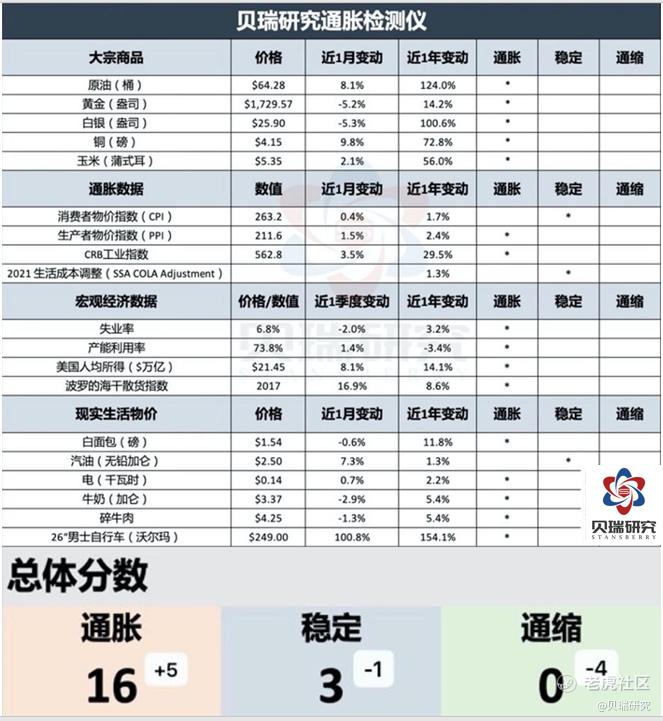
這些指標意味著企業正在賺更多的錢,就業增長率正在上升,人們消費水平更高。
經濟周期越強,它需要中央銀行或**的發展助推就越少。當然,這也是推動資產令人難以置信地價格上漲的關鍵因素,在Steve博士的“融漲”理念裡也說到這點。
因此,我們需要關注經濟支撐何時會消失的提示。
如今我們不是唯一一群知道這個概念的人,但我認為現在很多人都忽略了一些重要的指標。
上週,大多數關於美聯儲最新會議的媒體報導都聚焦於政策怎麼就沒有改變。
彭博(Bloomberg)、華爾街日報(Wall Street Journal)和所有其它大型媒體似乎都認為,美聯儲會繼續支持經濟發展。
他們之所以會這麼認為,判斷依據實際上是美聯儲主席杰羅姆·鮑威爾(Jerome Powell)在會後例行新聞發布會上怒氣沖沖地走出大門,說美聯儲並沒有在討論採取措施收緊政策。

但是,所有仔細聽完整場發言的人,比如貝瑞分析師C. Scott Garliss,或者所有認真解讀他措辭的人,都能聽出情況可能比你想像中更早發生變化的蛛絲馬跡。
鮑威爾實際上談到了美聯儲何時會開始縮減資產購買(下文會解釋這點),還說到出人意料的經濟彈性,以及他對未來通脹的展望。
也就是說,我初步聽到的消息是,如果經濟繼續升溫,聯邦公開市場委員會(FOMC)將減緩其刺激性支出。FOMC是利率和美國貨幣供應的關鍵決策部門。
這些可不是無關緊要的細節,實際上它們最終將令美聯儲做出決策。讓我們來一一解釋:
經常關注貝瑞內容的讀者或許都知道,貝瑞已多次發布關於通脹話題的內容,分析師們也曾重點解讀過通脹,這是有原因的。往期關於通脹的發文,歡迎回顧:
與此同時,鮑威爾上週表示,許多市場觀察人士可能誇大了通脹將迫使美聯儲提高利率並抑制增長的擔憂,關於這點我們不做評論,因為更重要的是要知道美聯儲現在的想法和接下來可能的做法。
據美國央行預計,在短期內,經濟突然反彈的基礎效應將促使通貨膨脹率上升約1%,但這個影響在幾個月後將會減弱。
美國央行同時表示,全美港口和交通樞紐的供應鏈瓶頸(這正在影響價格)也將是暫時的。
鮑威爾認為不需要應對任何通脹壓力,也就是不需要加息。但他再次表示,美聯儲準備採取適當措施來保持經濟增長和穩定發展。
因此,如果有必要,美聯儲會試圖將通脹率維穩在2%左右,以實現它的目標。這樣事態就不會失控。不過,在減少資產負債表擴張之後可能就會加息。
截至目前,美國央行行長鮑威爾預計2024年初前都不會加息。
但這並不代表這些個預測不會改變,畢竟美國財政部長、前美聯儲主席珍妮特·耶倫(Janet Yellen)上週二剛表示,如果有更多支出計劃獲批,那可能需要加息為經濟反彈降溫。

如果我們參考08年的金融危機的時間點,也就是數年後經濟開始騰飛的時候,美聯儲是在2013年底開始縮減資產購買,並在2015年12月加息。
把這段歷史作為一個實用的參考指標,再加上美聯儲目前的預測,即2024年1月或會首次加息,再以此得出結論,可能在2022年1月左右會進行縮表。
這是鮑威爾公佈的關於美聯儲計劃的另一條線索。
鮑威爾表示,美國經濟恢復能力良好。
在經濟開始反彈之際,美聯儲之所以能對它的政策保持耐心,很大一部分原因是它有能力承受。
美國最初出現疫情后,聯邦公開市場委員會擔心這將給經濟增長前景留下永久性的創傷,因此,它希望通過大規模的計劃來協助經濟渡過難關。
但美國央行當時設想的下行趨勢從未出現,現在最糟糕的階段已經過去了。
比如,鮑威爾並不擔心房地產市場的崩潰,這通常是經濟周期的結束。如今消費者的財務狀況較好,銀行的資產負債表也表現不俗。
美聯儲現在也沒有看到十多年前房地產危機期間出現的高風險貸款,因此,美聯儲認為,目前的行業繁榮不會給經濟帶來任何風險。
鮑威爾在過去一年中公開表示,美聯儲將盡其所能來支持經濟發展,他也做到了。
美聯儲首先會做的可能就是“縮減”資產購買支出,也就是阻止資產負債表繼續擴張。
美聯儲堅定地致力於實現國會授意它要達到的“最大就業”和“物價穩定”的目標。
美聯儲目前必須使用的兩大工具是管理利率(基準聯邦基金利率目前接近於零)和擴大資產負債表規模,來助推整個金融體系的流動性。
擴表這點,美聯儲目前的資產購買計劃包括每月購買價值1200億美元的資產,其中800億美元是美國國債,400億美元是抵押貸款證券。
債券和利率成反比關係,當債券價格上漲時,收益率下降;當債券價格下跌時,收益率上升。原理是,通過持續購買這些債券,美聯儲可以在無需調整聯邦基金總體利率的情況下管理利率。
但如果美聯儲不去購買,利率可能會大幅上升。
自從疫情措施實施以來,美國央行的資產負債表已在約14個月內從大約4.2萬億美元增長至近7.8萬億美元,這不是一件小事。這就是為什麼當記者在新聞發布會上問鮑威爾是否已經到了聯邦公開市場委員會開始討論縮減資產購買的時候,起初美聯儲主席完全否認,然後耍太極的原因。
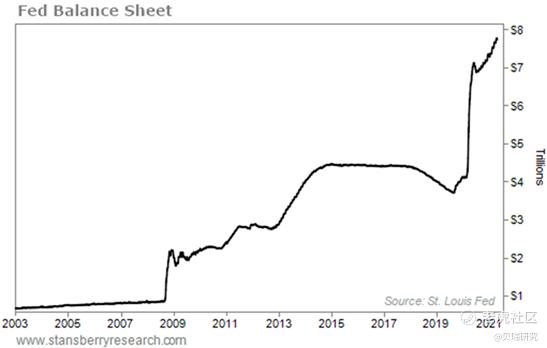
數據的確顯示經濟活動正在恢復,他說,**疫苗進程的推進,正在促進經濟恢復正常。(在2020年底,美國人僅接種了300萬支疫苗。截至近日,大約32%的美國人已經完成了疫苗接種,45%的美國人至少接種了第一劑。)
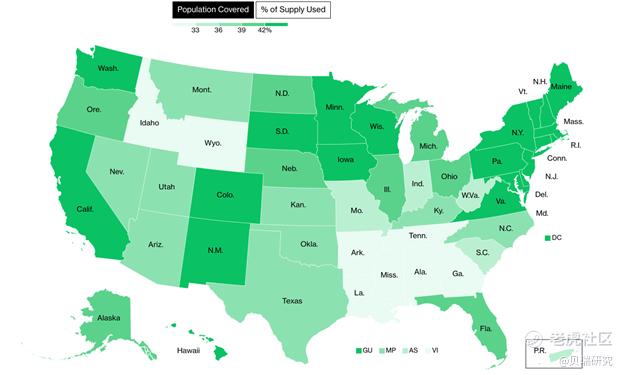
但是鮑威爾說,未來的疫情形勢誰也說不准,在確定之前美聯儲的政策將保持不變。他表示,美聯儲依然會重點關注經濟發展成果,而不是預測。聯邦公開市場委員會需要更清楚地了解**的實際感染率。
在全民能夠安全地重新開展正常的日常活動之前,經濟還無法完全復甦,美聯儲也不會改變政策路線。

但是,正如在前文提到的,鮑威爾在新聞發布會上承認了縮減購債規模的可能性,但這個信息媒體沒有解讀出來。
鮑威爾說,美聯儲希望看到增加更多就業機會,比如3月份就新增了100萬個就業機會,他希望接下來的幾個月也能像3月份那樣。如果能實現這點,美國央行離實現目標也會更近一步。
屆時,聯邦公開市場委員會將會開始討論撤銷其寬鬆貨幣政策。
預測未來,用簡單的排除法,回顧歷史,這意味著首先是減少資產購買,而不是提高利率(美國央行通常採取這個措施來對抗通脹或為經濟“降溫”)。
美聯儲對美國經濟的貨幣支持政策不會馬上失效,甚至在未來幾週內也不會失效,目前的寬鬆貨幣政策可能會持續到秋季,直到出現美聯儲想看到的就業數據。
但如果未來幾個月就業增長和其它經濟指標持續走強,美聯儲或會在7月或8月左右開始考慮改變貨幣政策。
在懷俄明州傑克遜霍爾舉行的堪薩斯城聯邦儲備銀行(Kansas City Fed)年度經濟研討會(每年8月舉行)可能是進行貨幣政策調整的最佳時機。
這表示,現在可以看到兩項“救市”措施被“撤回”。此前分析師們曾指出:
(1)美聯儲正在返還美國財政部去年春天提出的2020年經濟刺激計劃中剩餘的資金。
(2)此外,最近美聯儲還讓輔助槓桿率(SLR)豁免到期。SLR是商業銀行必須持有的最低流動資金數額。2020年4月,美國央行估計,銀行暫時的SLR豁免到期將產生1.6萬億美元的槓桿貸款力。現在,美聯儲正在回籠銀行系統外的額外流動性。
這意味著美聯儲現在只有兩種工具來支持經濟發展,就是上文談到的兩種:資產購買和低利率。
這是大多數人沒有考慮到的,隨著經濟回升至(也可能高於)疫情暴發前的水平,美聯儲會越來越想重整自己的武器來應對下一次經濟衰退。
鮑威爾說,在疫情最嚴重的時候,最終目標將是再次加息,同時對未來數年的利率也做出接近於零的預測。
貝瑞研究分析師C. Scott Garliss認為,這一切都揭示了在未來幾個月,美聯儲將首先停止買入新債券,而不是在當前持有的債券到期時將資金再投資。最終也會再次加息。
正如前文所說的,美國經濟正在增長,而且它還有進一步增長的潛力。
但在某種程度上,經濟將不得不進行自我調節。
出現這種情況後,我認為投資者們應該為這輪獲利回吐做好準備,尤其是來自華爾街的獲利回吐,因為輕鬆賺錢的局面即將結束。
果真如此的話,拋售可能會對那些亢奮的交易者產生意想不到的影響,他們自去年3月以來一直享受著令人難以置信的牛市行情。
也就是說,美聯儲的下一波動作能達到現在的“融漲”的頂峰嗎?正如Steve博士預計的在今年晚些時候將出現頂峰那般。這個概率還是挺大的,鑑於融漲正進入它的下一個階段,所以讀者可以多關注Steve博士最新更新的內容。
正如他所說,我們現在正處於一個風險巨大、回報豐厚的時代,要想減少投資失誤,投資者就要知道該持有什麼,該遠離什麼資產。如果你一直關注貝瑞,你就知道我們在說什麼。
因此,我們會繼續密切關注美聯儲在2021年下半年的講話,因為美國央行能帶來美好時光,也能帶走它們。
什麼時候會變天?歡迎關注貝瑞研究(原文節錄),獲取美聯儲政策持續解讀。
您是否在尋找最好的WordPress彈出插件?一個不錯的WordPress彈出插件可幫助您將網站訪問者轉換為電子郵件訂閱者和付費客戶。
有數十個WordPress彈出式插件可以幫助您提高轉化率。
但是,它們中的大多數會降低您的網站速度,提供不准確的統計信息,或者兩者均會更糟。
在本文中,我們將比較市場上最流行的WordPress彈出插件,以便您可以看到哪個是最好的WordPress彈出插件。
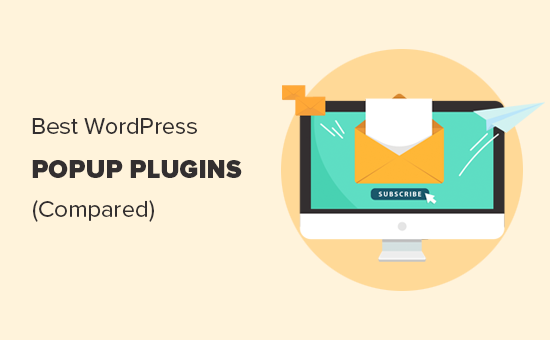
彈出窗口需要小心使用。製作不當的WordPress彈出窗口很容易令人煩惱,並破壞用戶體驗以及品牌聲譽。
您需要選擇一種提供適當的行為交互,定向和個性化功能的解決方案,以便在確保最大轉換率的同時提供最佳的用戶體驗。
性能是大多數WordPress彈出插件的另一個問題。由於許多WordPress彈出式插件使用WordPress來跟踪分析,因此這會大大增加服務器負載並降低您的網站速度。如您所知,緩慢的頁面速度會對您的SEO排名產生負面影響。
這就是為什麼您需要一個WordPress彈出式插件,該插件可提供強大的轉換功能而又不會減慢您的網站速度。
最後但並非最不重要的一點是,您需要確保您選擇的WordPress彈出插件確實可以與WordPress託管環境一起使用。許多彈出插件的編碼不正確,因此它們的高級功能(如A / B測試和報告)無法與許多託管公司現在使用的大多數高級緩存解決方案一起使用。
對WordPress使用彈出式插件的主要目的是幫助您捕獲潛在客戶並增加電子郵件列表訂戶。
在為您的網站或在線商店選擇WordPress彈出插件時,您需要注意上述三件事。
既然您知道了大多數WordPress彈出窗口構建器的常見問題,就可以將其用作評估所有流行的WordPress彈出窗口插件的標準。
現在,由於有許多彈出式插件,因此此過程可能會非常耗時。
因此,我們為您進行了研究。以下是我們將在指南中比較的最佳WordPress彈出插件:
現在,讓我們看看它們中的每一個,以找出哪個是最好的WordPress彈出窗口插件,可以幫助您發展網站。
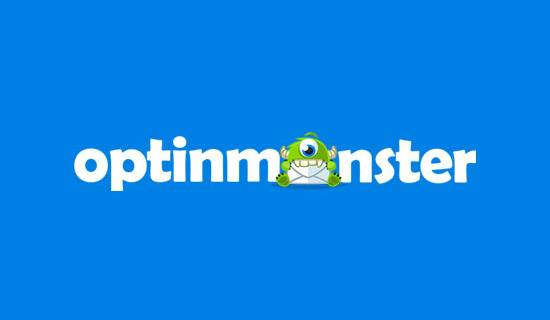
OptinMonster是市場上最受歡迎的銷售線索生成軟件。它使您可以輕鬆地將網站訪問者轉換為訂閱者和客戶。
它帶有一個功能強大的WordPress彈出窗口生成器以及最全面的定位和個性化功能集。簡而言之,它可以讓您像市場營銷專家一樣最大程度地提高轉換潛力。
特徵
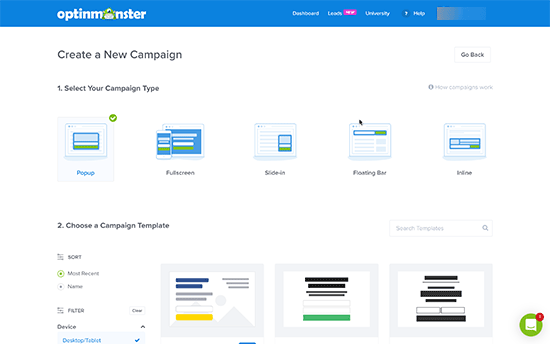
OptinMonster提供了市場上最強大的定位和個性化功能集。它們使您可以創建不同的活動,包括彈出窗口,全屏歡迎墊,浮動欄,滾動框等。
借助其定位功能,您可以按用戶正在訪問的頁面,網站上的活動,地理位置以及其他數十種用戶來定位用戶。
您可以創建自己的規則以顯示彈出窗口,從而使它們更加個性化和高效。
以下是OptinMonster最著名的功能:
查看所有功能,我們可以自信地說它是市場上最全面的WordPress彈出窗口生成器。它具有立即增長您的電子郵件列表和增加轉換所需的全部功能。
表現
使用OptinMonster的最大優勢在於性能。這是一個SaaS應用程序,這意味著它不使用您的WordPress託管資源。
它是異步加載的,這意味著它也不會降低您感知的頁面加載速度。這不僅對用戶體驗至關重要,而且對SEO也至關重要。
最後但並非最不重要的一點是,由於OptinMonster不使用WordPress來存儲分析數據,因此您的統計信息將是最準確的,並且可以在任何託管環境中使用。
使用方便
OptinMonster帶有直觀的拖放彈出窗口生成器。您可以通過添加背景,選擇顏色,圖像,字體以及您自己的文本和註冊表單來簡單地設計自己的彈出窗口。
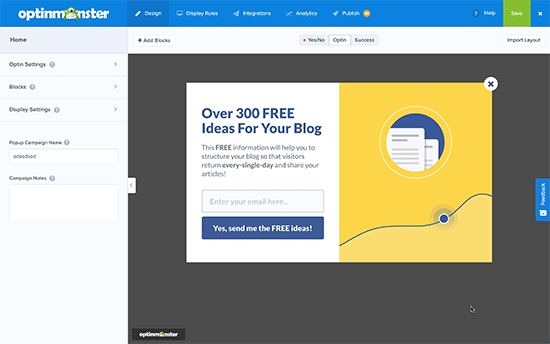
但是,如果您不想這樣做,那麼您會發現漂亮的現成彈出模板可供選擇。這些模板的每一個都可以使用簡單的指向和單擊編輯器完全自定義。
將彈出窗口添加到您的網站也非常容易。您無需編輯任何WordPress文件或向您的網站添加代碼。您只需安裝其WordPress連接器插件即可。
定價:每月9美元起(每年計費)。
獎勵:您可以嘗試免費計劃,該計劃僅可通過OptinMonster WordPress插件獲得。WPBeginner用戶可以使用我們的OptinMonster優惠券獲得更多節省。
披露: OptinMonster是我們在WPBeginner上使用的彈出插件。許多流行的博客作者和企業都使用OptinMonster,包括Social Media Examiner,Michael Hyatt,NBA等。
WPBeginner的創始人Syed Balkhi是OptinMonster的聯合創始人。他建立了這個插件來幫助我們獲得更多的電子郵件訂閱者。現在,他擔任該公司的顧問。
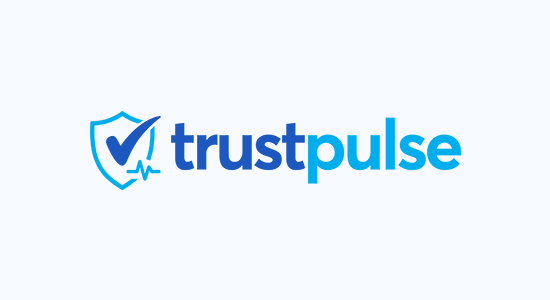
TrustPulse是一個WordPress彈出插件,使用社交證明來幫助您提高網站上的轉化率。
它會在您的網站上顯示社交驗證通知,以幫助建立用戶信任度,觸發FOMO(害怕丟失)效果,並鼓勵更多用戶註冊或購買。
特徵
TrustPulse通過使用侵入性較小但高效的彈出窗口共享社交證明,可以幫助您立即贏得用戶信任。以下是使它在我們的最佳WordPress彈出窗口插件列表中獨一無二的一些功能。
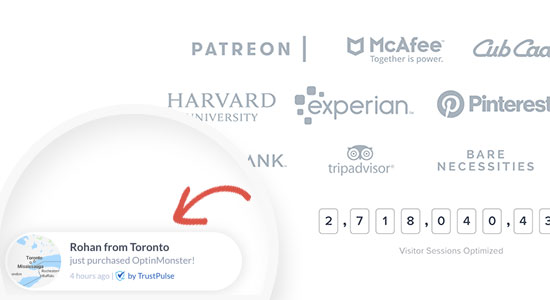
表現
如果您經營電子商務業務,那麼速度對於網站上的更多銷售至關重要。TrustPulse不會影響您的頁面加載速度,並且可以同時改善用戶體驗。
這是一個SaaS應用程序,不使用您的WordPress託管資源。用於顯示彈出窗口的所有代碼都是從雲服務器異步加載的。
使用方便
TrustPulse帶有易於設置的瘋狂過程。默認的社交證明彈出窗口幾乎不需要修改就可以工作。
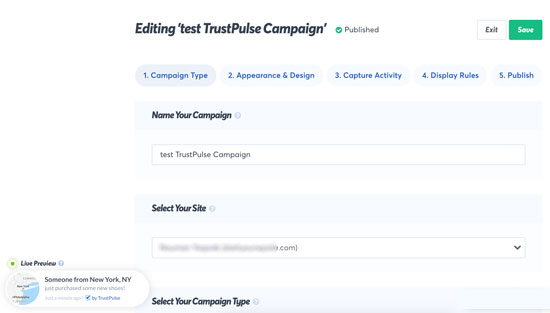
它具有易於使用的界面,可讓您自定義彈出窗口,設置定位,查看統計信息以及在在線商店上運行自定義的廣告系列。
定價:每月免費提供500次課程,然後從每月4美元(每年計費)開始定價。

Bloom是由Elegant Themes製作的最流行的WordPress彈出插件,該插件是最古老的商業WordPress主題商店之一。作為獨立的WordPress插件可用,Bloom為博客提供了易於使用的WordPress彈出窗口製作工具。
特徵
Bloom附帶了一組不錯的功能,這些功能涵蓋了良好的WordPress彈出插件所需要的基本要求。
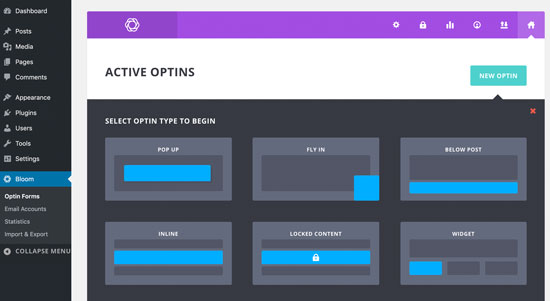
表現
Bloom是一個獨立的WordPress插件,這意味著它將從您的WordPress網站加載所有代碼。這意味著它將使用您的服務器資源並影響您的頁面加載時間。
它試圖通過優化代碼和使用WordPress最佳實踐來緩解這種情況。但是,如果您的站點繁忙且服務器資源有限,則這會降低網站的性能。
根據您的WordPress緩存插件設置,報告統計信息和功能(例如A / B測試)可能會發生錯誤。
使用方便
通過簡單的拖放彈出窗口製作器,Bloom非常易於使用。使用Bloom創建新的選擇單很簡單,而且用戶界面也很容易弄清楚。
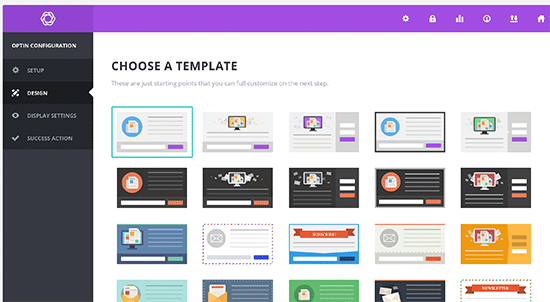
當您配置顯示設置時,麻煩就來了。有太多選項可供選擇,這使用戶界面有些混亂。
定價:帶有“典雅主題”會員資格,每年89美元起。

Sumo是WordPress的免費彈出式插件,可讓您將彈出式窗口添加到您的網站。他們提供了高級版本,提供了更多選擇。
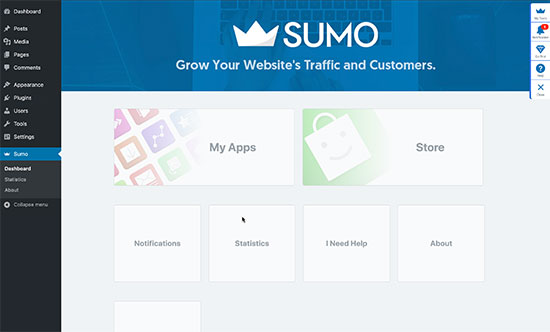
特徵
免費版本的功能受到限制,並在彈出窗口中添加Sumo品牌。
表現
Sumo異步加載代碼,從而減少了對性能的影響。根據您的廣告系列設計,對效果的影響可能會有所不同。
使用方便
Sumo與您的WordPress網站集成。但是,您需要從他們的網站管理您的帳戶,並使用Sumo信息中心來設計廣告系列。
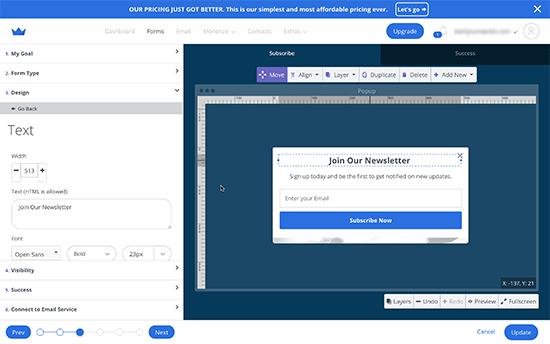
它帶有一些學習曲線。廣告系列製作工具不是最簡單的,但您會找到解決方法。我們發現使用起來有些困難,尤其是在集成和定位方面。
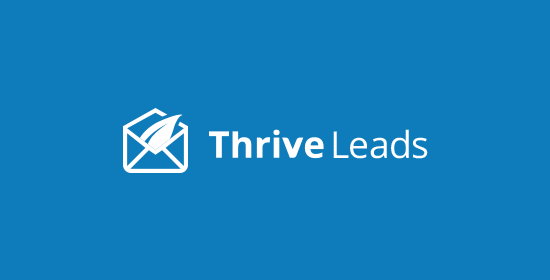
Thrive Leads是另一個流行的WordPress彈出插件。它帶有漂亮的彈出模板和易於使用的彈出生成器。
特徵
Thrive Leads旨在幫助您在WordPress網站上捕獲潛在客戶並擴大電子郵件列表。這裡是其功能的快速概述。
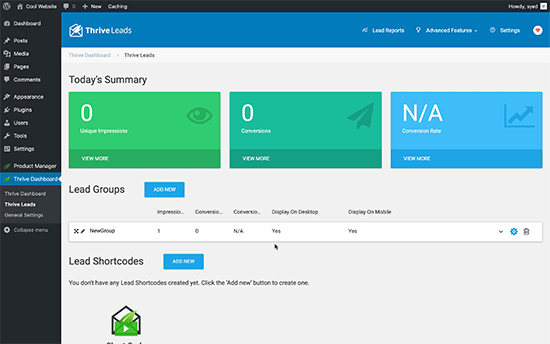
表現
Thrive Leads確實嘗試在性能和功能之間取得平衡。但是,它仍然比我們列表中的其他解決方案慢。
它是一個獨立的WordPress插件,這意味著所有代碼都位於您的WordPress網站上並利用您的託管資源。
這也意味著像Bloom一樣,報告和A / B測試等功能可能無法在某些託管公司或流行的緩存插件上正常運行。
使用方便
Thrive Leads非常易於使用,並帶有多個模板。它還帶有基本的彈出式窗口製作工具,該製作器具有拖放功能,可自定義您的彈出式窗體。
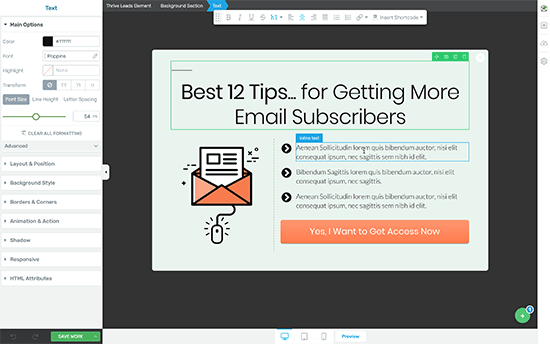
在您的網站上顯示Optins會涉及一些學習過程。設置彈出窗口時,許多初學者會有些掙扎。
您將看到潛在顧客組,潛在顧客簡碼,Thrive框和其他功能的不同選項,而無需過多說明。這意味著用戶將不得不探索他們以了解他們的工作。
定價:單個站點許可證的年費從$ 67起。
對於本文,我們決定實際嘗試使用每個WordPress彈出插件,並測試它們對網站性能和速度的影響。
基本上,我們創建了一個演示網站,並使用每個插件的默認設置來創建一個基本的WordPress彈出窗口。之後,我們使用Pingdom測試頁面加載速度。
以下是我們的測試結果。
| 彈出插件 | 頁面加載時間 | 要求 | 頁面大小 |
|---|---|---|---|
| OptinMonster | 1.03秒 | 17 | 225KB |
| Trustpulse | 894毫秒 | 14 | 130KB |
| Bloom | 1.23秒 | 22 | 188.8KB |
| Sumome | 1.24秒 | 41 | 575.5KB |
| Thrive Leads | 1.38秒 | 26 | 736.4KB |
在我們的結果中,我們發現OptinMonster是最快的WordPress彈出插件,對性能的影響最小。
考慮到我們設置的標準,OptinMonster成為最好的WordPress彈出插件。它是最快的彈出窗口生成器,並提供令人難以置信的工具來提高轉化率。
它也最容易與精美的彈出模板和功能強大的拖放編輯器一起使用。它與所有流行的CRM,電子郵件營銷平台,最佳WordPress表單插件,自定義HTML表單等一起使用。
在合適的時間向合適的用戶顯示您的彈出式窗口,這才使它們更加有效。OptinMonster包括功能強大的頁面級定位選項,個性化設置和基於事件的觸發器。
如果您正在經營一家電子商務商店,那麼我們建議使用OptinMonster + TrustPulse。這使您可以利用社交證明和OptinMonster強大的購物車放棄功能最大程度地提高轉化率。
Before I start off this article, I have to set the context here. Different individuals have different risk preference, some are risk takers and some are risk averse and some are somewhere between. So where do I stand? I stand in the middle between taking risk and taking less risk at different point in time but remain a risk taker in general. I wasn’t like this in the past during my younger days as I always want to wait for the best and safest price aka one with the highest margin of safety. Things go and I realise that keep waiting for the highest margin of safety is an ideal concept yet difficult to execute. Why? Markets never behave according to what we wish for but move according to what it wants. Yes to Mr Market.
To state, the market has been in a long secular bull since March 2009 and has corrected every now and then. For me, trying to call the top and bottom seems like a rolling a dice for many people unless you are George Soros, Paul Tudor or… So what can we do on our end? First, look at ourselves and assess our age, cash inflow from income, hustle (popular word now since Elon Musk used it recently) and spending. If you are young, you can afford to let time be your best friend. That’s when you can increase your chances of being right without being “killed” by volatility. Here, it is important not to take leverage as market cycle after so many years tend to be volatile. However, to keep waiting on the sideline without deploying a single dollar for me in itself is a risk too. For me, as my part of my portfolio management, I have deployed a certain percentage of my deployable cash in investment. This cash portion is different form my trading pot, which I need to take quick losses of I go wrong. For investment, I can afford to wait for my investment thesis to be proven right. Yes, however one must avoid the self filling prophecy or confirmation bias and take an unbiased view of the stock that one is holding. Exact timing of entry is good and ideal but may not be as critical as trading.
For investment or trading, capital preservation remains the most important rule. Risk is not knowing what one does not know or thinking one knows something when he or she does not really know. Volatility in itself is not risks but in fact, opportunities for individuals who are agile enough to capitalise on the opportunities. Share price in itself remains demand and supply of stocks that depend on fundamentals as well as Mr market emotions. So what are you risking depends on how much you know of the fundamentals of the company for people who are investing? For people who are trading, what you are risking depends on the timeframe and position size of your trade? Overleveraged position even when the trade eventually proves right may be closed out due to margin calls. That is why setting up stop loss for a trade is so important. Setting up stop loss is in itself a science and art. You have to learn along the way. In fact, small losses for trading is better as one starts the trading journey. This gives you the clarity that no one can ever win the market.
Kindly note that the above should not be construed as investment or trading advice.